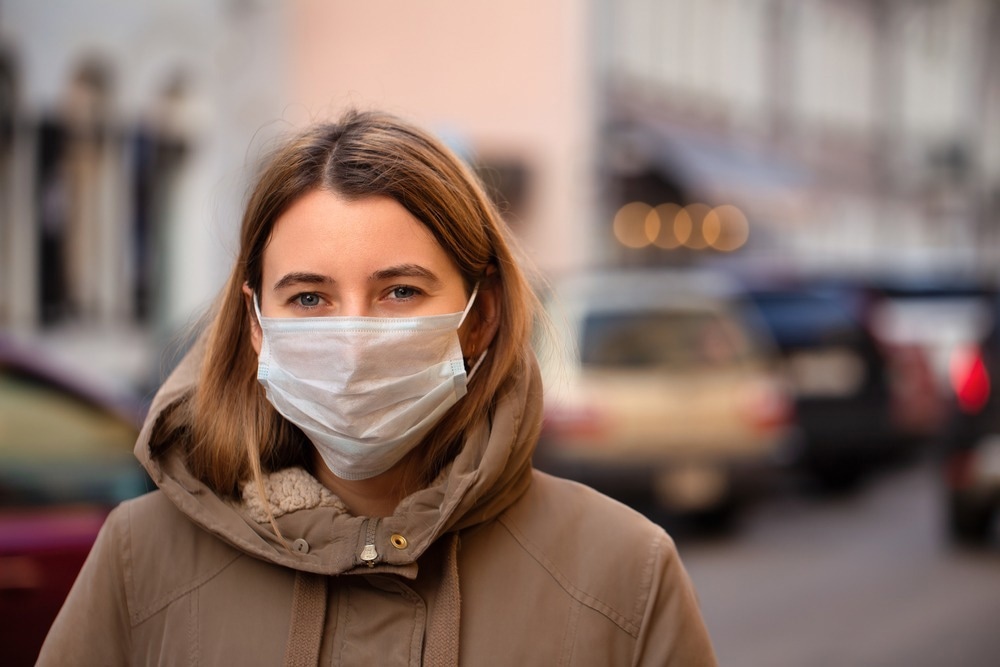The coronavirus disease 2019 (COVID-19) pandemic led to a series of nationwide lockdowns that disrupted the daily lives of the people globally. For example, a significant number of workers and students were required to quickly shift to remote work, while most individuals also limited their social activities, thus increasing their social isolation from others.

Study: The good, the bad, and the mixed: Experiences during COVID-19 among an online sample of adults. Image Credit: eugenegurkov / Shutterstock.com
Negative impacts of COVID-19
Several studies have highlighted the negative psychological impacts of the COVID-19 pandemic. However, analysis of both the negative and positive experiences during the early stages of the pandemic, their differences as a function of COVID-19-specific stressful events, and their co-occurrence potential have not been conducted.
Most studies on the psychological effects of the COVID-19 pandemic have focused on its negative impacts, particularly on mental health disorders, increased concern towards the health of loved ones, psychological harm, loss of health, and leisure activities. The COVID-19 pandemic also amplified inequalities that already existed among disadvantaged groups, including those who faced socioeconomic disadvantages, ethnic minority groups, and the unemployed.
Several previous studies have also indicated the worsening of mental health conditions throughout the COVID-19 pandemic in those who already experienced mental health disorders. Social isolation is identified as a prominent factor that contributed to negative COVID-19 experiences.
However, a limited number of studies have explored the positive impacts of the COVID-19 pandemic on the general population. Nevertheless, few studies indicated an increase in well-being and a decrease in anxiety in people with pre-existing mental health conditions.
Social connectedness, along with healthy coping and resilience themes, has also been reported among people, including those identifying with disadvantaged groups. Additional positive experiences that have been reported include having more time to do enjoyable activities, be in nature, spend with partners, and exercise.
About the study
A new PLOS One study explored the different experiences that the general population encountered during the COVID-19 pandemic, as well as the association of COVID-19-specific stressful events to these experiences.
The current study had three objectives, which included investigating factors that could measure positive and negative COVID-19 experiences, using a person-centered approach for the identification of underlying profiles of these experiences, as well as comparing emergent profiles concerning differences in psychological distress, demographic information, and specific stressful events for better understanding.
The study included participants who anonymously completed an online survey that was posted on Amazon’s Mechanical Turk (MTURK) and was open from June 8, 2020, to June 14, 2020. Seven items were created to determine the experiences of the participants during the early months of the pandemic.
These items were rated on a six-point scale ranging from Strongly Disagree (1) to Strongly Agree (6) and each followed the prompt, “Relative to months before COVID-19. . .” Data on demographic and specific COVID-19 events were collected from all study participants.
The Perceived Stress Scale (PSS) was used to measure stress during the past month and was rated from Never (0) to Very Often (4). Depression was measured using the Patient Health Questionnaire (PHQ2), while anxiety was measured using the General Anxiety Disorder scale (GAD2). Both depression and anxiety responses ranged from Not at all (0) to Nearly every day (3).
Study findings
The study selected the four-profile model, where the “Predominantly Positive” profile indicated those who strongly supported positive COVID-19 experiences, the “Moderately Mixed” profile indicated those who supported both negative and positive COVID-19 experiences, the “Predominantly Negative” profile indicated those who strongly supported negative COVID-19 experiences, and the “High Mixed” profile indicated those who strongly supported both negative and positive COVID-19 experiences.
Taken together, 22.49% of participants identified as “Predominantly Positive”, 46.85% were considered “Moderately Mixed”, 22.76% as “Predominantly Negative”, and 7.91% represented “High Mixed.” Males were over-represented in the “High Mixed” and “Moderate Mixed” profiles, while females were over-represented in “Predominantly Negative” profiles.
African American/Black and Hispanic/Latino were over-represented in the “High Mixed” profile. Those looking for work or laid off were over-represented in the “Moderate Mixed” profile, while those who were disabled, retired, or unable to work prior before COVID-19 were over-represented in the “Predominately Negative” and “Predominately Positive” profiles.
Low earners were over-represented in the “Predominately Negative” profiles, whereas high earners were over-represented in the “Predominately Positive” profiles. Average and below-average earners were over-represented in the “High Mixed” profile.
Individuals belonging to the “High Mixed” profile were younger and experienced psychological distress. A significant proportion of those in the “High Mixed” profile also had a loss of wage, were themselves diagnosed with COVID-19 or knew someone with COVID-19, and knew someone who died due to COVID-19.
Conclusions
The current study highlights that the experiences during the early stages of the COVID-19 pandemic cannot be defined unilaterally as negative or positive, as many of these experiences were highly diverse and complex.
These findings help identify which individuals were at the greatest risk of negative psychological effects during the pandemic and can subsequently be used for clinical and research purposes. However, additional research is needed to develop targeted intervention and prevention programs to increase the resilience of individuals, both during and beyond the current pandemic.
Limitations
The study has certain limitations. First, the cross-sectional design of the study was not sufficient to determine positive and negative COVID-19 experiences. Second, the psychological distress was self-reported and could comprise recall bias.
Third, the sample is not evenly distributed, as it primarily consists of White or Caucasian individuals. A final limitation is significant doubt regarding sample accuracy.
Journal reference:
- Mills, D. J., Petrovic, J., Mettler, J., et al. (2022). The good, the bad, and the mixed: Experiences during COVID-19 among an online sample of adults. PLOS One. doi:10.1371/journal.pone.0269382.